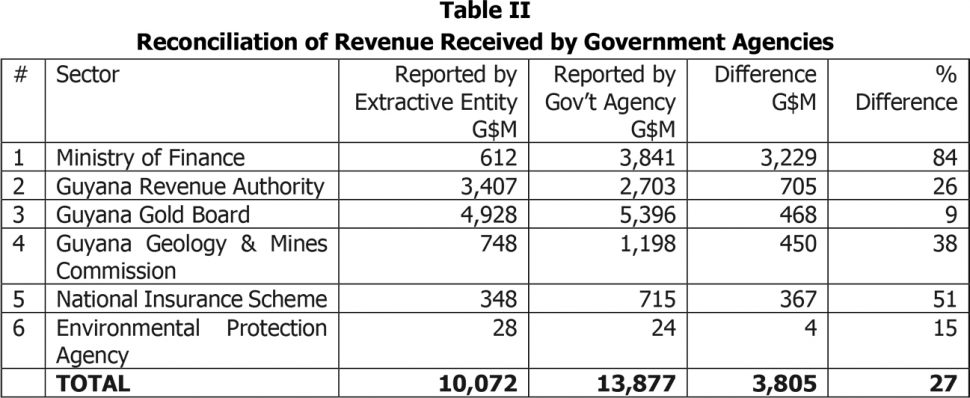 Last week, we examined the 2017 Guyana Extractive Industries Transparency Initiative (GYEITI) Report which was published last month. However, our examination was incomplete due to the length of the report which contains 6,368 pages, 17 annexes, and 116 tables and figures. So far, we have dealt with revenues received by government agencies. The report highlighted several shortcomings in this area and concluded that the total revenues collected from 17 extractive entities could not be satisfactorily determined because of the absence of reporting templates. The amount involved was G$4.577 billion representing 33 percent of reconciled revenues. BDO LLC, which prepared the report, also stated that it was unable to conclude that the financial data submitted by reporting entities and included in the report, were subject to audits that have been performed in accordance with international standards.
Last week, we examined the 2017 Guyana Extractive Industries Transparency Initiative (GYEITI) Report which was published last month. However, our examination was incomplete due to the length of the report which contains 6,368 pages, 17 annexes, and 116 tables and figures. So far, we have dealt with revenues received by government agencies. The report highlighted several shortcomings in this area and concluded that the total revenues collected from 17 extractive entities could not be satisfactorily determined because of the absence of reporting templates. The amount involved was G$4.577 billion representing 33 percent of reconciled revenues. BDO LLC, which prepared the report, also stated that it was unable to conclude that the financial data submitted by reporting entities and included in the report, were subject to audits that have been performed in accordance with international standards.
Today, we conclude our coverage of the GYEITI report by highlighting other key areas. Readers will appreciate the difficulty in capturing in two articles all the findings and recommendations contained in the report. We therefore hope that by presenting a summary of the recommendations, they will be able to glean what are the other major findings.

